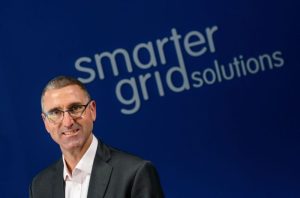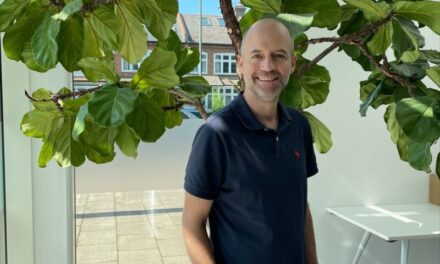By Graham Ault, co-founder and executive vice-president at Smarter Grid Solutions

Before jetting off to New York to take part in the United Nations’ Climate Week, Ofgem chief executive Jonathan Brearley delivered an interesting speech to an investment forum in London, during which he outlined many of the challenges facing Great Britain’s electricity network. One comment in particular caught my eye.
Ofgem’s boss highlighted the important role that flexible connections are already playing in helping to get renewable energy generators such as wind and solar farms connected to the transmission network. Yet flexible connections for major transmission network projects are only one of the uses for flexibility and flexible connections that the UK must harness if it’s to hit its legally binding 2050 net-zero target.
Flexible connections use clever pieces of software to help balance energy flows across a network. In essence, they allow the supply of electricity from wind farms, solar farms, and other generators to be increased or decreased depending on demand, and allow demand-side response, with factories and other heavy industrial users dialling up or down their usage depending on the amount of power that’s flowing and the network capacity that’s available.
Brearley pointed to the role that flexibility is playing in easing the pressure on connection queues. The figures he quoted make for sobering reading: “On current projections, 33% of generation capacity in the transmission queue will have to wait for a further 10 years before they reach their offered connection dates. And 55% have been offered connection dates beyond 2030.”
That backlog stands in the way of the UK hitting its important target to decarbonise the electricity network by 2035, phasing out gas-fired power stations in favour of wind farms, solar farms, and other forms of renewable energy generation. Equally important, the length of the queue is a stumbling block for the private sector investors – from pension companies to fund managers – that want some certainty before they hand over the tens of billions of pounds of cash that are going to be needed to build the low carbon energy assets to reach net zero.
Harnessing flexible connections in the distribution system too
Flexible connections are a cost-effective way of using information and communication technologies to get more renewable energy generators connected to the network at the fast pace that the UK needs in order to decarbonise. Rather than waiting for expensive infrastructure upgrades – physically laying more wires and cables, as well as beefing up substation capacity and installing other equipment – flexibility can provide value for money for the businesses and households that ultimately pay for the electricity network’s upkeep and expansion through their bills.
That expansion also needs to gather pace. Wind the clock back to the post-war era and there was a four-fold increase in Great Britain’s electricity generation capacity. Now, we need to do the same thing again in the space of the next ten years to decarbonise the grid.
Flexibility can also help to deal with the intermittency of renewable energy by allowing more battery storage to be connected to the network, both at the grid scale and also regionally or even locally for heavy industrial users or households with their own batteries. The wind doesn’t always blow, and the sun doesn’t always shine and so we need more ways to store electricity when it’s generated and then release it when it’s needed.
Intermittency is a much bigger issue now than it was between 1950 and 1970, when the national grid was being built out. Coal-fired power stations fed electricity into the trunk of the transmission network, and it fed down through the branches of the regional distribution networks to the homes and businesses that needed the power. The switch towards natural gas as the fuel of choice for electricity generation in the 1990’s did not change that approach much and the early days of wind power development in the first decade of this century only began what is now a rapidly advancing transition in our energy systems.
Now, solar farms, wind farms, and other renewable energy generators are connected to both the distribution networks and the transmission network, meaning the flow of power no longer happens just in one direction. Flexible connections allow for that more complicated balancing of supply and demand across both the transmission and distribution networks because capacity constraints exist throughout the grid.
Taking a flexible approach to flexibility
There’s no one-size-fits-all form of flexible connection. Software based on the active network management (ANM) approach, which is already being used at scale by three of Great Britain’s six distribution network operators (DNOs), is helping these DNOs to morph into distribution system operators (DSOs). This is the form into which Ofgem and National Grid’s Electricity System Operator arm needs them to evolve to help balance supply and demand, renewables, and storage using advanced technologies, customer flexibility and market-based approaches to running their grids. All DNOs acknowledge the need to go further and faster in creating a more flexible grid with even better flexible options for their customers.
That same ANM approach also underpins software platforms that help individual users to access flexibility. For example, local councils that generate their own power through wind turbines and solar panels can decide whether it’s more cost effective to sell that electricity to the grid, store it in batteries for when it’s needed, or use it to charge their fleets of electric vehicles.
Managing flexibility isn’t a problem that’s unique to the UK. In the United States, the queue to connect capacity to the grid stands at a whopping 2TW. While some generators wait for extra grid infrastructure to be built, new software is enabling DSOs to connect projects to their grids, using ANM algorithms to help ease the pressure on that queue.
Back in the UK, Ofgem has done an excellent job of creating a regulatory regime around flexible connections that gives consumers and network users lots of choices. Flexibility will never suit everyone – some generators or users will need to be “always on”.
What we need now is for more adoption of flexibility across all the constituent parts of the grid – from the transmission network and generators down through regional DNOs and DSOs and to the site level for commerce and industry and other energy users. Only then will we unlock the true potential of flexible connection and management of energy assets that will help the UK meet its net-zero commitments.



